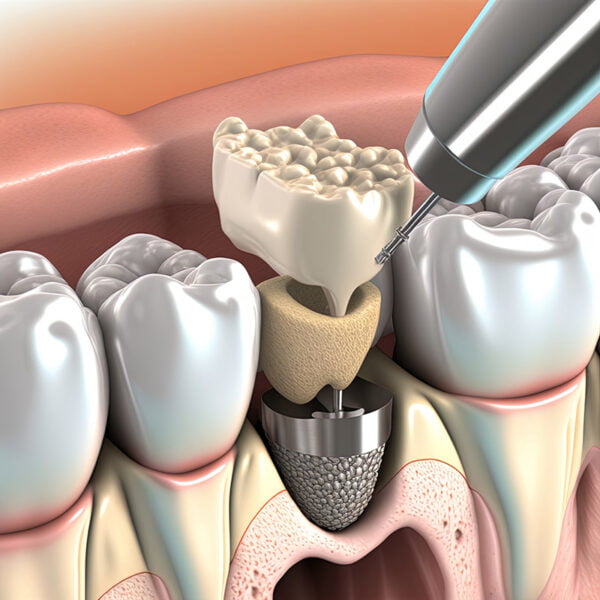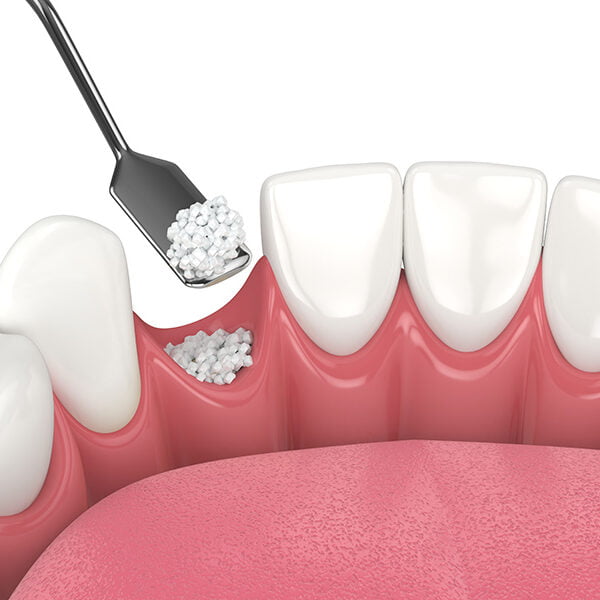Call Us (727) 607-3662
- Map & Directions
- Office Hours: Mon to Thurs: 9am - 5pm Fri : 9am - 4pm
- Request Appointment
After losing one or more teeth, jawbone deterioration is a common occurrence, often resulting from factors like injury, decay, or trauma. When a tooth is lost, the stimulation that it provided to the surrounding bone ceases, leading to gradual deterioration. Over time, this loss of bone density can progress to a point where there isn’t adequate bone to support dental implants. In such cases, your dentist may suggest a bone grafting procedure as a viable solution. This service is readily available in Clearwater, near Oldsmar, Florida.

Local anesthesia is applied to numb the areas for bone removal and augmentation, ensuring patient comfort throughout the procedure. The dentist then makes an incision in the gum to assess the required bone volume. This service is conveniently offered in Clearwater, near Oldsmar, Florida.

An incision is made below the lower front teeth to expose the chin bone. Partial extraction of the bone and any marrow is performed, followed by closure of the incision with stitches. This specialized service is accessible in Clearwater, near Oldsmar, Florida.

The removed chin bone is securely fastened in the jaw using titanium screws. Optionally, a mixture of your bone marrow and grafting material can be applied to expedite healing, followed by suturing of the incision. This comprehensive service is offered in Clearwater, conveniently located near Oldsmar, Florida.
After the procedure, your dentist will usually prescribe antibiotics and pain medication to manage any discomfort and prevent infection. Additionally, you’ll be advised to follow a controlled diet, primarily consisting of soft foods like pastas and Jell-O to avoid putting undue pressure on the treated area. The full healing process for bone grafts typically takes six to nine months. Dental implant placement is postponed until your oral cavity has completely recovered from the grafting procedure. This comprehensive service is readily available in Clearwater, near Oldsmar, Florida.
Moreover, autografts entail the removal of bone from the individual’s own body, often from regions such as the hip, rib, or jaw, and relocating it to the area requiring bone. They are particularly efficient because they harmonize well with the patient’s biological makeup, rendering them a favored option whenever feasible.
Furthermore, allografts utilize bone graft material from a human donor, which is processed and sterilized before transplantation. Additionally, they are readily available and eliminate the need for a second surgical site, making them a common choice for bone grafting procedures.
Moreover, xenografts involve employing bone graft material sourced from animals, like bovine (cow) or porcine (pig). Furthermore, this material undergoes specific processing and sterilization to reduce the chances of immune reactions and infections. Additionally, xenografts are frequently employed when human donor grafts are unavailable or unsuitable for a given situation.






"*" indicates required fields
EXCELLENTTrustindex verifies that the original source of the review is Google. This review is overdue. Daymar has been my dental hygienist for many years. She is always meticulous, proactive and very kind. A month or two ago, she cleaned my teeth and just did a wonderful job. I am grateful that Daymar is such a humble and kind perfectionist!Trustindex verifies that the original source of the review is Google. I like coming into Northwood Dental and enjoy the kind staff and having my cleaning done by Gayle. Thanks, Daniel R.Trustindex verifies that the original source of the review is Google. This is the best dental practice in town. Everyone is so professional and caring. I highly recommend anyone to check them out.Trustindex verifies that the original source of the review is Google. It was my first time to Northwood Dental to establish care as a new patient and I give them all 10/10. Daymar is an excellent dental hygienist. Gentle and thorough. Chas and Dawn were very efficient and caring throughout the x-ray and examination sequence. Dr. Almaguer was kind and conscientious. Chelsea made it so easy to get scheduled for my next appointment. I enjoyed my first visit at Northwood Dental. Thank you for your kindness and consideration in welcoming this new patient to your establishment. I look forward to my next visit in 6 months.Trustindex verifies that the original source of the review is Google. During my initial consult DR Tapal’s and Martin’s care and attentiveness added to my comfort and confidence. Also Mandy was helpful coordinating my records and X-ray transfers, and making my first visit easier. I had a great first impression with Northwood Dental.Trustindex verifies that the original source of the review is Google. Honest, comfortable and professional. Dr K. Excellent. Excellent service. They work with you to make sure you are happy. I try different doctor but not happy. I start Northwood Dental and I am very happy. They conform your appointment few days before your appointment day. Also they work with you on payment. I have been a patient at Northwood Dental for more than 1 year and I am really happy with the quality of their care. The staff is really nice. They are very very very excellent office and all doctors are excellent and staff are also excellent. Thank you Dr. K.Trustindex verifies that the original source of the review is Google. Caring, professional, give the patient information regarding procedures and care.Trustindex verifies that the original source of the review is Google. Always a great experience! Gwen, you're awesome!Trustindex verifies that the original source of the review is Google. Trustindex verifies that the original source of the review is Google.

At Northwood Dental, we provide patients with a wide range of dental treatments including preventative care, general dentistry, cosmetic services, and emergency care.

+1 (727) 275-7872
+1 (727) 607-3662
+1 (727) 616-0378
+1 (727) 616-0379
+1 (727) 761-1929
+1 (727) 761-2177
+1 (727) 616-0425